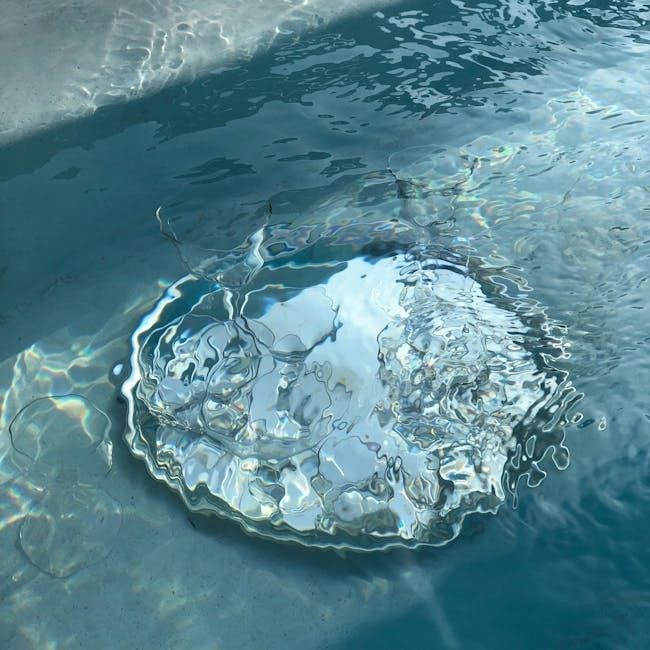Installing an above-ground pool is a rewarding DIY project‚ offering a refreshing backyard escape․ Proper installation ensures durability and safety‚ transforming your outdoor space into a relaxing oasis․
Overview of Above Ground Pools

Above-ground pools are a popular choice for backyard swimming‚ offering versatility and affordability․ They come in various shapes‚ sizes‚ and depths‚ catering to different preferences and yard layouts․ Made from durable materials like steel‚ resin‚ or hybrid models‚ these pools are designed for long-lasting enjoyment․ Inflatable pools are another option‚ providing temporary fun with minimal setup․ Above-ground pools are generally more cost-effective than in-ground pools‚ with easier installation and lower maintenance․ They can be customized with decks‚ fencing‚ and lighting to enhance their appeal․ Whether you prefer a round‚ oval‚ or rectangular design‚ above-ground pools offer a convenient way to create a refreshing oasis in your backyard․
Importance of Proper Installation
Proper installation of an above-ground pool is crucial for safety‚ durability‚ and functionality․ An incorrectly installed pool can lead to structural damage‚ water leakage‚ or even collapse․ Ensuring the ground is perfectly level and the site is prepared correctly prevents uneven settling‚ which can strain the pool walls and liner․ Following manufacturer instructions closely is essential to avoid costly repairs and ensure the pool operates efficiently․ Improper installation can also pose safety risks‚ such as electrical hazards or unstable structures․ A well-executed installation protects your investment‚ extends the pool’s lifespan‚ and ensures a safe and enjoyable swimming experience for years to come․
Planning and Preparation
Planning and preparation are essential for a successful above-ground pool installation․ Evaluate your space‚ check local regulations‚ and prepare the site to ensure a smooth process․
Choosing the Right Location
Selecting the ideal spot for your above-ground pool is crucial․ Ensure the area is level‚ clear of obstructions‚ and receives partial shade to prevent excessive heat buildup․ Avoid low-lying areas prone to water accumulation and keep it away from power lines for safety․ Check local building codes and homeowners’ association rules if applicable․ Also‚ consider accessibility for maintenance and equipment placement․ A well-chosen location enhances usability and aesthetic appeal‚ making your backyard oasis enjoyable for years to come․ Proper placement ensures safety‚ efficiency‚ and overall satisfaction with your new pool․
Checking Local Regulations and Permits
Before installing your above-ground pool‚ it’s essential to verify local regulations and obtain necessary permits․ Building codes‚ zoning laws‚ and neighborhood association rules may apply․ Ensure compliance with safety standards‚ such as fence requirements and electrical installations․ Some areas require inspections or permits for pool installations‚ especially for larger pools or those with decks․ Failure to comply could result in fines or removal of the pool․ Research your local ordinances or consult with your city’s planning department to avoid legal issues․ Proper compliance ensures a safe and lawful installation‚ allowing you to enjoy your pool without concerns․
Site Preparation and Ground Leveling
Site preparation and ground leveling are critical steps for a successful above-ground pool installation․ Begin by removing sod and debris from the selected area to create a clean‚ even surface․ Use a shovel and spirit level to ensure the ground is perfectly flat‚ as uneven terrain can damage the pool or liner․ For pools with a sand base‚ spread a layer of sand evenly and compact it using a hand tamper or plate compactor․ Proper leveling ensures the pool frame assembles correctly and prevents water from shifting unevenly․ This step requires patience but is essential for the structural integrity and longevity of your pool․
Budgeting and Cost Considerations
Budgeting is essential for a stress-free above-ground pool installation․ The total cost includes the pool kit‚ tools‚ and optional features like decking or fencing․ Pool kits range from $1‚000 to $6‚000‚ depending on size and quality․ Tools like sand‚ tamper‚ and ground cloth add $500-$1‚000․ Additional features like heaters or lights increase costs further․ Labor costs vary‚ with DIY saving money but requiring time and effort․ Professional installation can add $2‚000-$5‚000․ Maintenance and chemicals are ongoing expenses․ Consider all factors when planning your budget to avoid overspending․ Compare brands and sizes to find the best value for your investment․ Hidden costs‚ like permits‚ should also be factored in;

Installation Process
Installing an above-ground pool involves preparing the ground‚ assembling the frame‚ and securing the liner․ Follow manufacturer instructions to ensure a smooth and successful setup process․
Ground Preparation and Leveling
Proper ground preparation is crucial for a successful above-ground pool installation․ Begin by removing sod and debris from the designated area․ Use a shovel to level the ground‚ ensuring it is even and firm․ A spirit level tool can help verify the surface is perfectly horizontal․ Sand or compacted gravel is often recommended for the base to ensure stability․ Uneven ground can lead to pool damage or liner issues․ Mark the pool’s dimensions with stakes and string to guide your work․ Double-check leveling to avoid water pooling or structural stress․ Proper preparation ensures a secure and long-lasting pool setup․
Assembling the Pool Frame
Assembling the pool frame requires precision to ensure structural integrity․ Start by laying out the bottom rail according to the manufacturer’s instructions․ Use a wrench or screwdriver to secure the frame pieces together․ Ensure all connections are tight and aligned properly․ For round pools‚ attach the wall panels to the bottom rail‚ working your way around the perimeter․ For oval pools‚ install the straight and curved sections separately․ Use a level to ensure the frame remains upright and plumb․ Double-check all bolts and screws for tightness․ A sturdy frame is essential for supporting the liner and water weight‚ so take your time during assembly․
Installing the Pool Liner
Installing the pool liner requires careful attention to ensure a snug‚ damage-free fit․ Begin by laying the liner evenly over the prepared base․ Smooth out wrinkles and ensure the liner fits snugly against the pool walls․ Use a soft brush or broom to eliminate air pockets․ Secure the liner to the top rail with clips or straps provided in the kit․ Tighten the liner gradually‚ working your way around the pool to avoid stretching․ Avoid dragging the liner‚ as this could cause tears․ Once in place‚ inspect for any creases or damage․ A properly installed liner prevents leaks and ensures the pool’s longevity․ Follow the manufacturer’s instructions for precise fitting and securing methods․
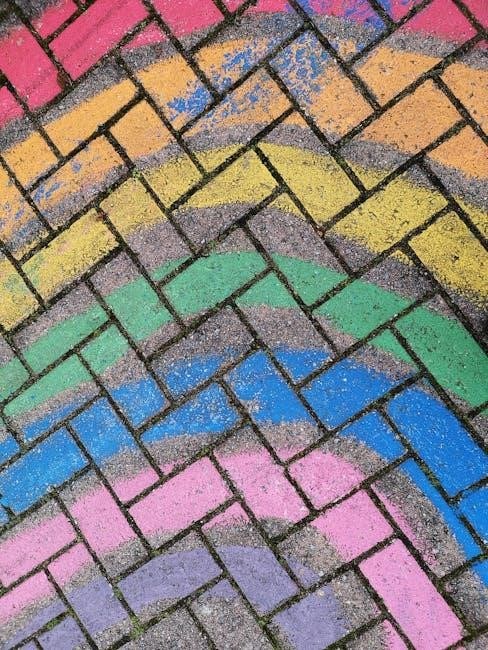
Connecting the Pump and Filter System
Connecting the pump and filter system is crucial for maintaining clean and safe water․ Begin by locating the appropriate space for the equipment‚ ensuring it is level and accessible․ Follow the manufacturer’s instructions to attach the pump and filter to the pool․ Connect the intake and return lines to the skimmer and return jets‚ respectively․ Tighten all connections securely to prevent leaks․ Ensure the system is properly grounded for safety․ If unsure‚ consider hiring a licensed electrician to handle the electrical connections․ Once connected‚ test the system by running the pump and checking for proper water circulation․ A well-installed system ensures efficient water filtration and maintains your pool’s clarity and hygiene․
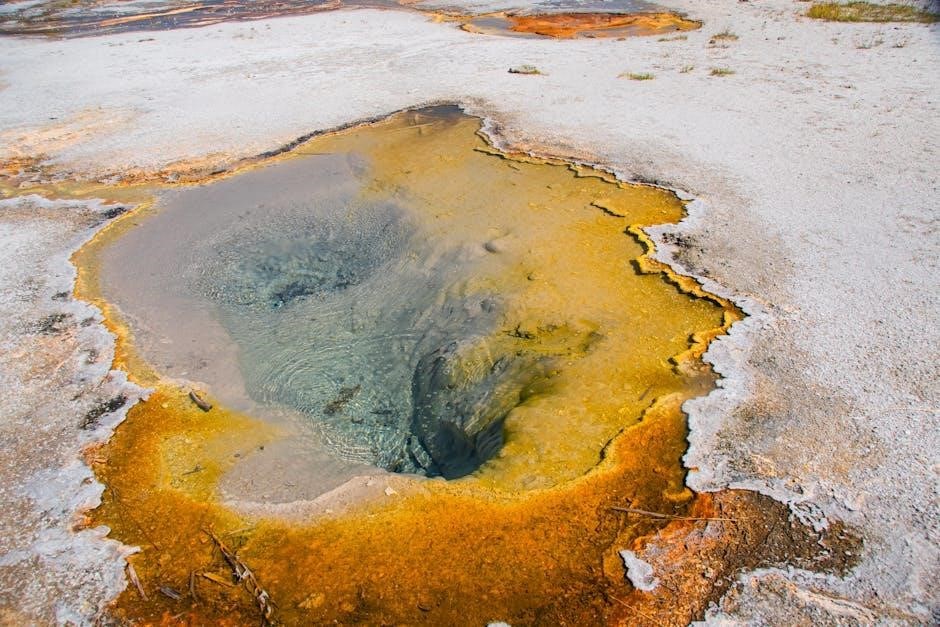
Equipment Setup
Setting up your pool’s equipment involves installing the pump‚ filter‚ and heater (if applicable)․ Ensure all electrical connections are secure and properly grounded for safety․ Connect the skimmer and return jets‚ then test the system to ensure everything functions correctly before filling the pool․
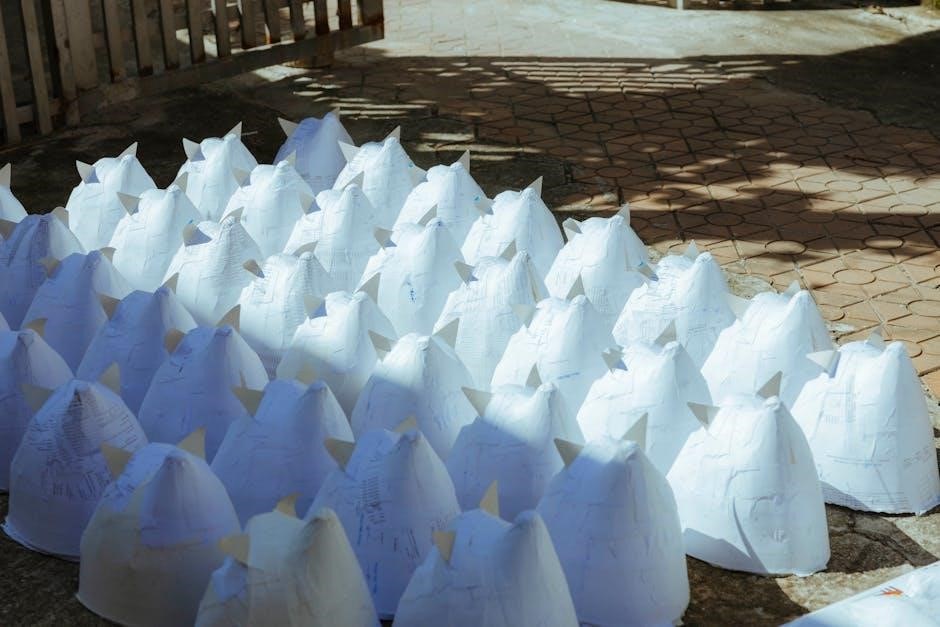
Installing the Skimmer and Return Jets
Installing the skimmer and return jets is crucial for proper water circulation․ Begin by attaching the skimmer to the pool wall‚ ensuring it aligns with the water level․ Secure it firmly with the provided hardware․ Next‚ install the return jets on the opposite side of the pool‚ ensuring they are level and evenly spaced․ Connect the skimmer and jets to the pump and filter system using the appropriate hoses and fittings․ Tighten all connections to prevent leaks․ Finally‚ test the system by running the pump to ensure water flows smoothly through the jets and skimmer․ Proper installation ensures efficient water circulation and filtration․
Setting up a pool heater requires careful attention to safety and manufacturer guidelines․ Begin by positioning the heater on a level surface near the pool equipment pad․ Ensure it is at least 12 inches away from any flammable materials․ Connect the heater to the pool’s plumbing system‚ following the sequence: pump‚ filter‚ heater‚ and then back to the pool․ Secure all connections to prevent leaks․ If using gas‚ ensure the line is properly installed and tested for leaks․ Follow the manufacturer’s wiring instructions and consider hiring a licensed electrician for complex setups․ Finally‚ test the heater by running the system and adjusting the temperature as needed․ Always refer to the user manual for specific instructions․ Proper installation ensures safe and efficient heating of your pool water․ Connecting electrical components is a critical step in above-ground pool installation․ Start by ensuring all power is turned off at the circuit breaker․ Locate the designated area for the electrical equipment‚ typically near the pump and filter․ Follow the manufacturer’s wiring diagram to connect the necessary components‚ such as the pump motor‚ heater‚ and timer․ Secure all connections with the appropriate wire nuts or connectors․ Double-check that all wires are properly insulated and meet local electrical codes․ If unsure‚ consult a licensed electrician to avoid safety hazards․ Properly connected electrical components ensure the pool operates efficiently and safely․ Always test the system before full operation․ The final steps involve filling the pool‚ testing water chemistry‚ and conducting a safety inspection to ensure everything functions properly and safely for enjoyment․ Filling the pool with water is the final step before enjoying your new oasis․ Start by attaching a garden hose to a nearby water source and begin filling the pool․ Ensure the water level reaches the recommended height‚ typically just below the skimmer opening․ Avoid overfilling‚ as this can cause water to spill over during use․ Depending on the pool size‚ filling may take several hours․ Once filled‚ double-check the water level and ensure the pool is ready for use․ Proper water levels are essential for the pump and filter system to function efficiently․ This step completes the physical installation process․ After filling the pool‚ testing the water chemistry ensures a safe and healthy swimming environment․ Use a pool test kit to measure pH‚ alkalinity‚ and chlorine levels․ The ideal pH range is 7․2–7․8‚ while alkalinity should be between 80–120 ppm․ Chlorine levels should be 1–3 ppm for proper sanitation․ Imbalanced chemistry can cause eye irritation‚ equipment damage‚ or algae growth․ Adjust levels as needed using chemical balancers․ Regular testing‚ ideally daily or weekly‚ maintains water quality and clarity․ Proper chemical balance protects swimmers and extends the pool’s lifespan․ Always follow manufacturer guidelines for testing and adjusting your pool’s water chemistry․ The final inspection ensures your above-ground pool is safe and ready for use․ Check all components‚ including the frame‚ liner‚ and equipment‚ for proper installation and functionality․ Verify that the pool fencing and gates meet local safety regulations to prevent accidents․ Ensure the area around the pool is clear of hazards and that all electrical components are securely connected․ Test the pump‚ filter‚ and skimmer to confirm they are working efficiently․ Conduct a visual inspection of the liner for any signs of damage or leaks․ Address any issues immediately to avoid future problems․ A thorough inspection ensures a safe and enjoyable swimming experience for everyone․ Regular cleaning‚ water chemistry checks‚ and equipment inspections are crucial for maintaining your above-ground pool․ Proper upkeep ensures safety‚ longevity‚ and optimal performance of your pool system․ Regular cleaning is essential to maintain a pristine and safe above-ground pool environment․ Start by skimming the surface daily to remove floating debris like leaves and insects․ Use a pool vacuum weekly to clean the floor and walls‚ ensuring dirt and algae don’t accumulate․ Additionally‚ inspect and clean the skimmer and pump baskets regularly to ensure proper water circulation․ Check the pool liner for any signs of wear or damage and address them promptly to prevent leaks․ Finally‚ test the water chemistry weekly and adjust the pH and chlorine levels as needed to maintain a healthy swimming environment․ Consistent maintenance will extend the life of your pool and keep it looking its best throughout the seasons․ Winterizing your above-ground pool is crucial to protect it from freezing temperatures and extend its lifespan․ Start by draining the water to below the skimmer and return jet levels to prevent ice damage․ Clean the pool thoroughly‚ removing any debris and algae․ Apply a winterizing chemical kit to stabilize the water chemistry and prevent contamination․ Install a high-quality winter cover to keep out dirt and debris․ Disconnect and drain all equipment‚ including the pump and filter‚ to avoid freeze damage․ Store equipment in a dry‚ protected area․ Regularly inspect the pool during winter to ensure the cover remains secure and water levels are appropriate․ Proper winterization ensures your pool remains in excellent condition for the next swimming season․ Common issues with above-ground pools include liner damage‚ pump malfunctions‚ and water chemistry imbalances․ For liner damage‚ inspect for punctures and patch them immediately․ If the pump isn’t working‚ check for clogged filters or faulty connections․ For water chemistry issues‚ test pH and chlorine levels‚ adjusting as needed․ Leaks around fittings or connections should be sealed promptly․ If the pool frame becomes unstable‚ ensure all bolts are tightened securely․ Regularly inspect equipment and address problems early to prevent costly repairs․ Keeping a maintenance log can help track issues and ensure your pool remains safe and functional year-round․ Ensure pool safety by installing fencing‚ supervising children‚ and keeping emergency equipment nearby․ Regular inspections and proper barrier installations help prevent accidents and ensure a secure environment․ Installing a sturdy fence around your above-ground pool is crucial for safety‚ especially if you have children or pets․ Most local regulations require a fence at least 4 feet high to prevent accidental drowning․ The fence should surround the entire pool area‚ with a self-closing and self-latching gate to ensure unauthorized access is prevented․ Materials like wood‚ metal‚ or vinyl are common choices‚ offering durability and aesthetic appeal․ Additionally‚ ensure no furniture or objects near the fence that could be used for climbing․ Regular inspections of the fence and gate are essential to maintain its integrity and compliance with safety standards․ Supervising children and pets near an above-ground pool is essential to ensure their safety․ Always maintain constant adult supervision when children are in or around the pool․ Teach children basic water safety and swimming skills to reduce accidents․ For pets‚ keep them away from the pool unless they are trained to enter and exit safely․ Never leave toys or floaties unattended‚ as they can attract curious children․ Install a pool alarm to alert you of unexpected entries․ Keep emergency equipment‚ such as a first aid kit and flotation devices‚ nearby․ Creating a safe environment ensures everyone can enjoy the pool responsibly․ Emergency preparedness is crucial for a safe above-ground pool experience․ Keep a first aid kit and a phone near the pool at all times․ Ensure all family members know how to respond to emergencies‚ such as CPR and rescue techniques․ Regularly inspect pool equipment and surroundings to prevent hazards․ Post emergency contact numbers‚ like 911‚ prominently․ Consider installing a pool fence with a self-latching gate to prevent unsupervised access․ Store rescue devices‚ like a shepherd’s hook or flotation aids‚ within easy reach․ By being prepared‚ you can quickly address any situation‚ ensuring a safe and enjoyable environment for everyone․ With proper planning and execution‚ installing an above-ground pool transforms your backyard into a refreshing retreat․ Follow the steps carefully to ensure a safe and enjoyable experience․ Installing an above-ground pool involves several critical steps․ Start by choosing the right location and ensuring the ground is leveled and prepared․ Next‚ assemble the pool frame following the manufacturer’s instructions․ Install the pool liner securely to prevent damage․ Connect the pump and filter system to maintain water quality․ Add necessary equipment like skimmers and return jets for proper circulation․ Fill the pool gradually and test the water chemistry for safety․ Finally‚ conduct a thorough safety inspection to ensure everything is functioning correctly․ Proper execution of these steps ensures a safe and enjoyable swimming experience․ Once installed‚ your above-ground pool becomes a refreshing centerpiece for backyard fun․ Regular maintenance ensures clean‚ safe water‚ while proper safety habits protect everyone․ Adding pool decking or landscaping enhances aesthetics and functionality․ Whether lounging in the sun or hosting gatherings‚ your pool offers endless enjoyment․ Seasonal decorating and lighting can further elevate the experience․ With careful upkeep‚ your pool becomes a lasting source of joy‚ creating lasting memories for years to come․ Embrace the convenience and relaxation your new above-ground pool provides‚ transforming your outdoor space into a vibrant oasis for recreation and leisure․Setting Up the Pool Heater (if applicable)
Connecting Electrical Components
Final Touches
Filling the Pool with Water
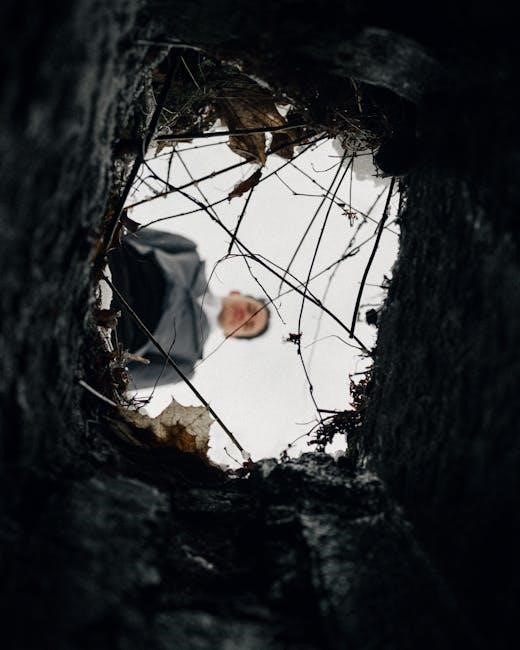
Testing the Water Chemistry
Final Inspection and Safety Checks

Maintenance and Upkeep
Regular Cleaning and Maintenance
Winterizing the Pool
Troubleshooting Common Issues
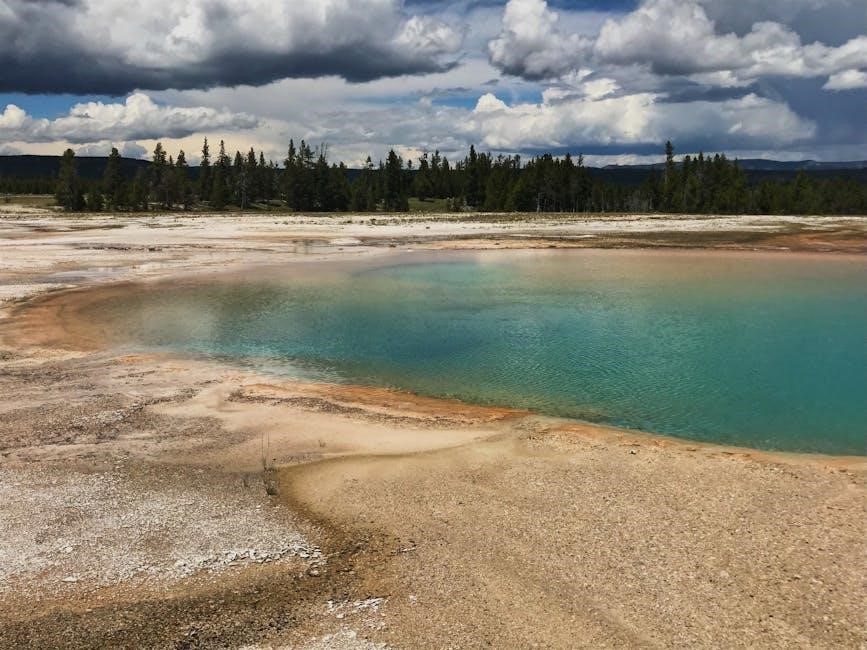
Safety Considerations
Pool Fencing and Barrier Requirements
Supervising Children and Pets

Emergency Preparedness
Enjoying Your New Above Ground Pool
